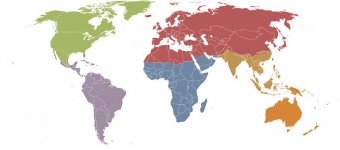Richard Klim
-------------------------
African Bird Club, 2016...
(With thanks to Phil Hyde for reporting to BB.)
Ref: Isenmann, Benmergui, Browne, Diam Ba, Hamallah Diagana, Diawara & El Abidine ould Sidaty 2010. Oiseaux de Mauritanie. Birds of Mauritania. SEOF.This is to inform you that the first version of the Bird Atlas of Mauritania is online at http://atlasornmau.org/ and is freely accessible. It is a follow-up to Isenmann et al 2010*, of which I am a co-author, and which has no bird distribution maps. I have prepared it using some 65,000 bird records from 78 sources. For each of over 500 species it indicates the half-degree squares where the species has been observed in the country as well as where there is evidence of breeding, and of wintering of Holarctic migrants.
Further development of the Atlas will be announced in due course.
Peter Browne: pbrowne AT primus.ca
(With thanks to Phil Hyde for reporting to BB.)
Last edited:






